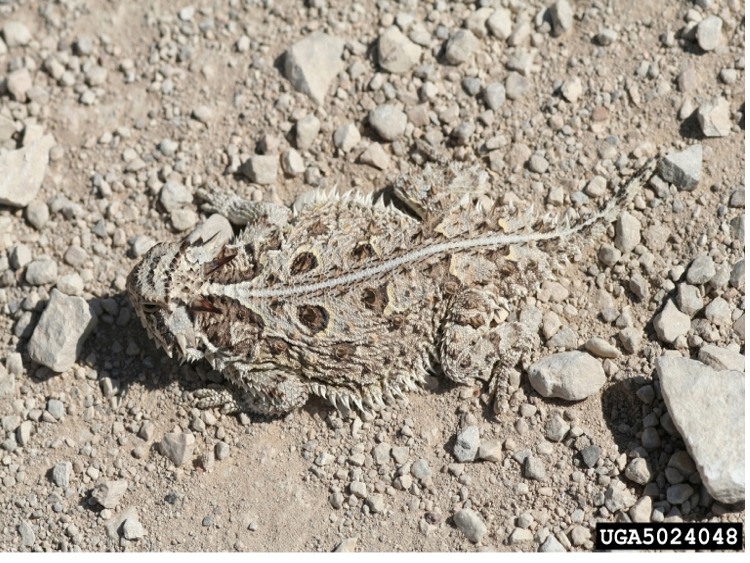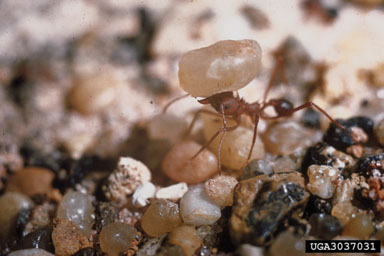
|
Imagine having to run in somewhere and eat your food as fast as possible in fear that your food could gang up on you and kill you! Well that is what a Texas Horned Lizard has to do, it runs by and grabs a mouthful of ants by sticking out its toad-like tongue and then retreats quickly, because its main food source is harvester ants, and if they were able to gang up an swarm the Texas Horned Lizard they could kill it by stinging it to death. The esophagus and stomach seem to suffer no damage from the insect bites or stings. It does eat other insects like grasshoppers, isopods, beetles, and beetle larvae. They plan out their daily routines based on the times of high ant activity. It will forage from at least several large colonies of harvester ants taking anywhere from 200-500 mouthfuls of ants in a single day. Their stomach takes up 13% of their total body mass because ants are mostly made up of an indigestible chitin, so they need a stomach this big because ants make up 50-90% of their diet even though ants are not a very efficient source of food, they need the stomach to help break down enough of the chitin so they can obtain enough energy (Manaster). Above a Texas Horned Lizard waits on an ant trail for some ants to come by for a quick meal. Below is one of his unsuspecting victims (Moser).
|













